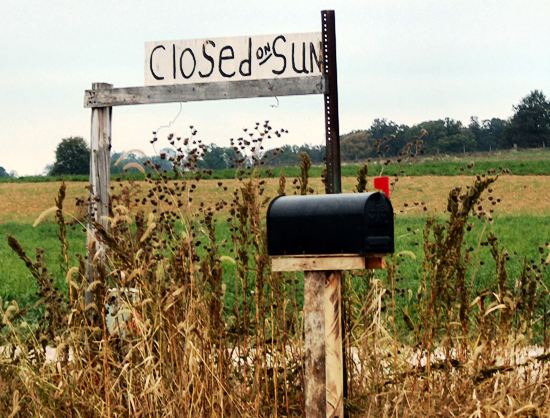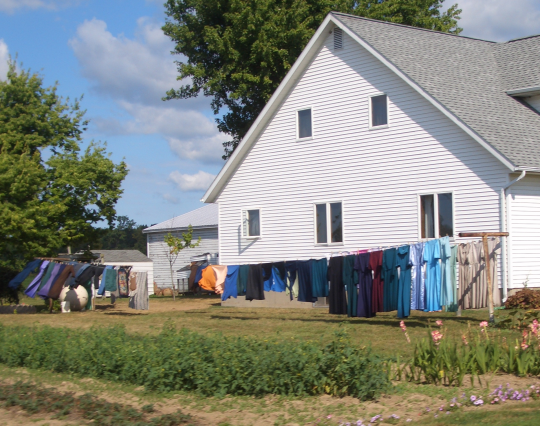The Amish Dairy
Some Amish dairymen still use the old-style milk containers to transport their milk, as seen in this photo taken in Swartzentruber Amish country in Ohio.
Lancaster Amish are allowed to use mechanical milkers, which has helped to allow that particular community to retain a relatively high percentage of functioning dairies. Amish barns will have a special tank to store the milk, and to cool and agitate it. The milk is typically transported from udder to tank using steel containers. After seeing all the splashing around that goes on in the typical milk barn, it makes me glad for pasteurization. I’m not so sure I would drink raw milk, popular among many Amish some of whom sell it to the general public, supposedly as a healthier, richer.
Typical dairies have from 40 to 50 cows. A few may milk up to 60 or 70. That usually requires some help, with some Amish employing a hired hand.
The milkman comes around any day but Sunday, usually every other day. The Sunday exception may mean late-night and very early morning milk pickups. I’ve been at Amish homes when milk trucks have come by after dark, near 10 pm. The typical farmer, who wakes up anywhere from 3 to 5 in the morning for the first milking of the day, learns to schedule in the very necessary post-lunch nap.







I have had a taste of raw milk. Didn’t like it at all and I am with you, please pasturize that stuff! LOL!
We dont like to drink anything but raw milk! Have been since i was young, and neverhad a broken bone! Health benefits are huge! Pasturized milk is a dead product, all the beneficial bacteria is killed off, natural enzymes that actually help the human body break it down better. Many lactos intolerant people can drink raw milk because of these natural enzymes. Humans have been drinking it raw since the first lactating animal was milked, it has only been the last 50 years that has been changed. Mostly for longer shelf life, and to travel longer distances. In VT we are allowed to sell 40 gallons a week(raw) off the farm. Of course farm cleanliness and serilized containers is key to keeping this product safe! Testing cows, and watching bacteria counts is a must for safe sale. Our 3 year old son wont drink pasturized milk, he says “why did they put water in it” Ulta pasturized is even worse, you cant even make yogurt, sour cream, cottage cheese, etc from it.(not from home) Keep it raw!! God bless!
Milk still shipped in cans(like pic above) cant be sold as grade A milk, probably will go for butter or cultured cheese.
Hi – really enjoyed reading your respectful posts about the Amish.
Sanitation levels of milk in Amish barns
(:Well michelle and vt, we’ve got opinions from both sides, great (:
didn’t mean to knock it VT dairyman, I’m sure you’re right about that, in fact I have not tried it yet myself so I guess I shouldn’t really say—i was just basing it on the fact that there is a lot of cow splatter going on in these barns and some of the milk containers I see the Amish use seem to be fairly open…seems a bit dangerous, but there may be more sanitary ways to milk, and if so I’m sure you’d be the one to know on this blog…
joe, thanks a lot, that is really great to hear, I do appreciate it. Thanks for reading.
Eric. This story is Ridiculously 11 yrs late. Please respond promptly.
Love
I get raw milk every Saturday I love it it’s the best pasteurized milk taste like vomit to me right now since I’ve been drinking raw milk it’s creamier it’s sweeter goes great with Ovaltine, nesquik and Hershey’s chocolate. And my five-year-old basically lives off of it and she is strong like a bull.
Canning milk
Is it true that milk was at one time canned in a water bath for 3 hours before pressure canners were available? The lower temperature of a water bath would prevent discoloration and change of taste and the 3 hours would probably kill any bacteria. Just wondering if water bath was the method in the past.